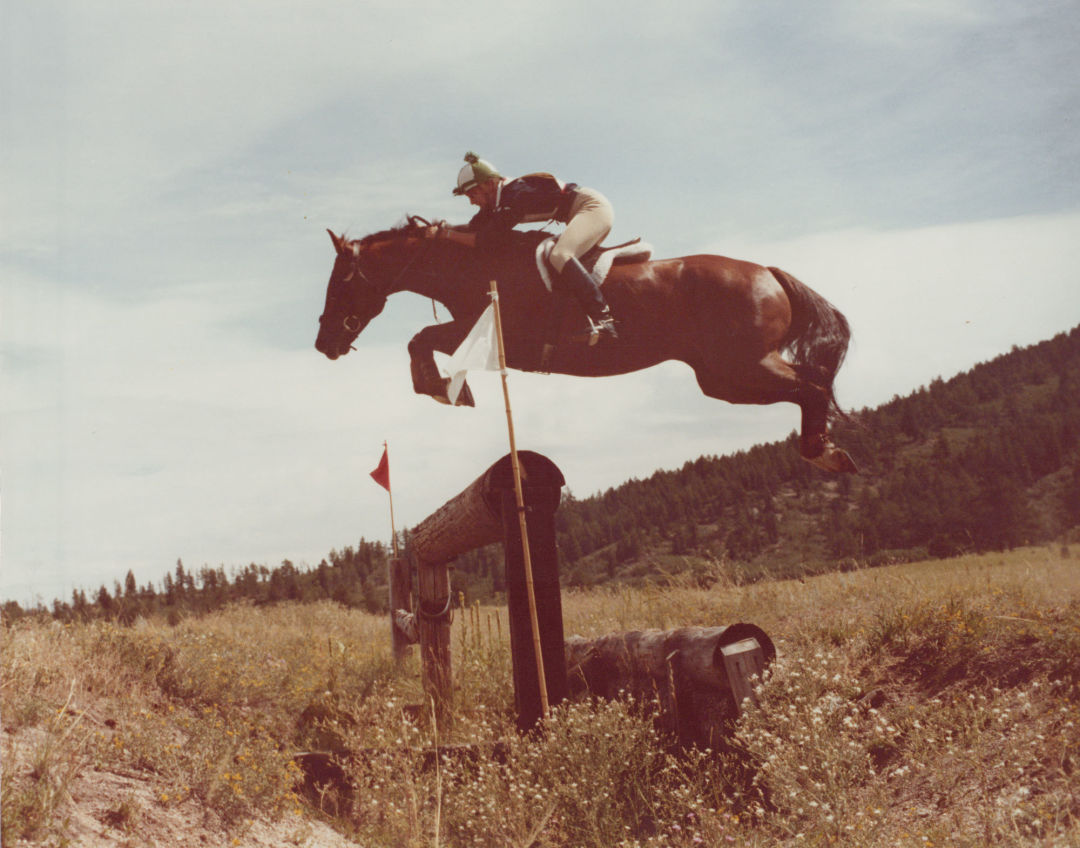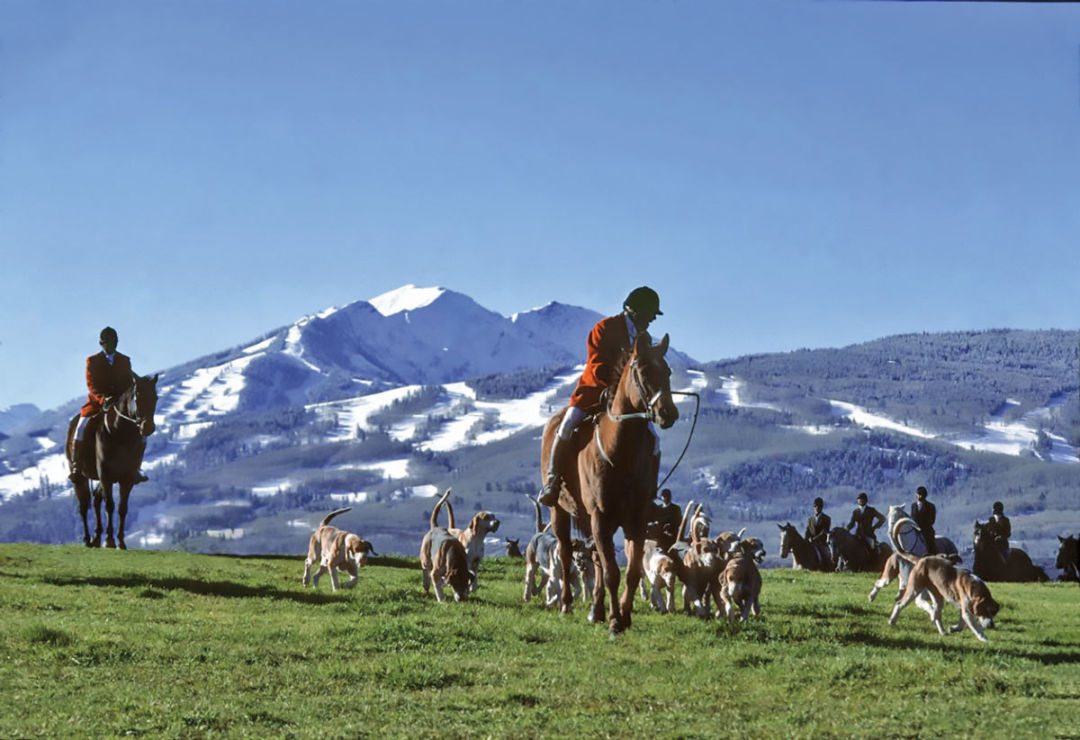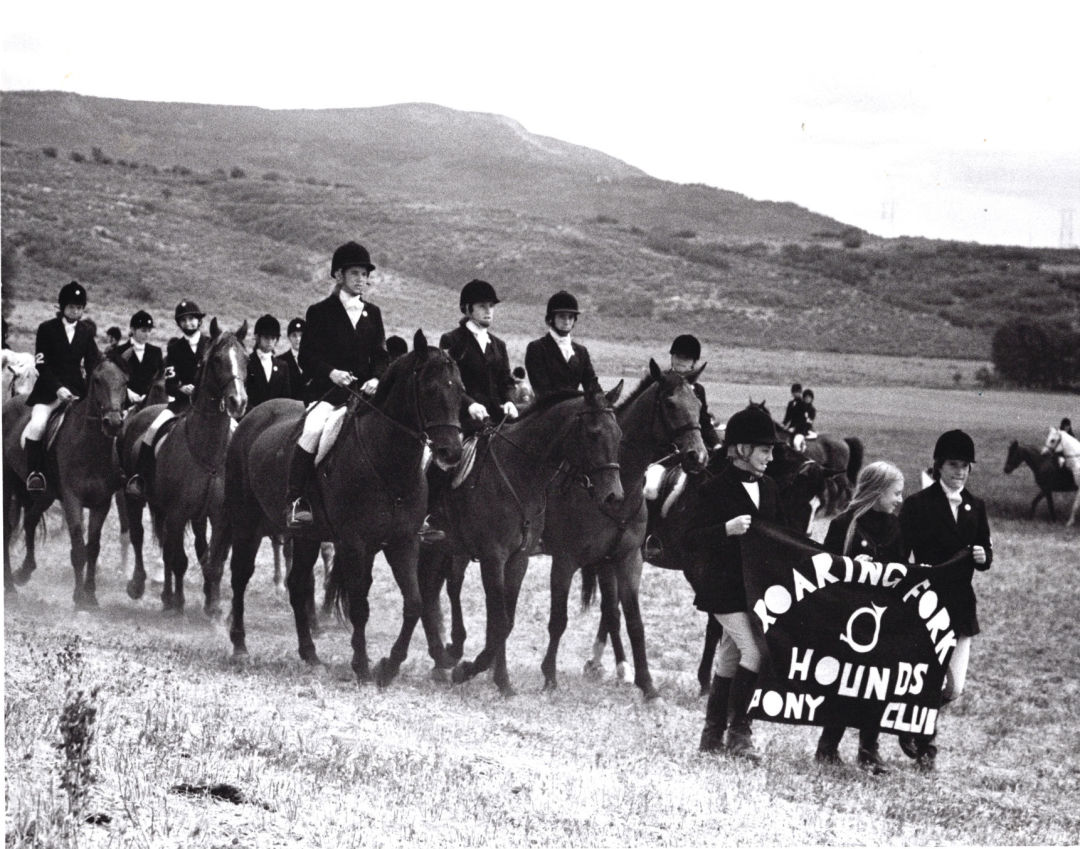During a Legacy Anniversary, the Roaring Fork Hounds Pony Club Rides On.

Bridget Strang jumping Wine Picnic in the early 1980s
Image: Courtesy RFH Pony Club
Fifty years ago, in the autumn of 1970, a hunting horn blew over the mountain pastures and sage-studded foothills of Little Woody Creek. The call marked the first official day of the Roaring Fork Hounds (RFH), organized by Judge John Wendt, master of the hunt. Wendt provided the hounds and the financial backing, and the idea of a local hunt club took off.
With its easygoing hospitality, the RFH Hunt was instantly popular. In its heyday, it had as many as 75 participants, either active riders or social members who showed up for the lavish après-hunt breakfasts and the annual Hunt Ball.
“Everyone was welcome,” reminisces Kit Strang, who owns a ranch in Missouri Heights. “We had cowboys in Western tack, English riders decked out in their black coats and forest green collars, and John Wendt—and later my husband, Mike—as the hunt masters in their pinks.”
Despite the laid-back vibe, Wendt ensured that the club adhered to proper etiquette and protocol. Says Strang, “Our kids all learned the English hunt rules—what was acceptable and what wasn’t.”
“John Wendt was terrifying!” remembers Valery Moore Kelly, current RFH Pony Club district commissioner, who was a young rider when the hunt club started. “At the breakfasts, he made all of us kids wait until adults had been served, telling us that was how it was done in British hunts.”
Soon, Kit’s late husband, Mike, who would serve as a US Representative from Colorado in the mid-1980s, took over as master of the hunt. Also a polo player, he invited local teammates to join the weekend hunts, and they jumped their polo ponies along with the rest of the gang.

Master of the Hunt Mike Strang rides with the hounds in October 1987.
Needless to say, at 7,200 feet, what became known as the “Highest Hunt in America” wasn’t an exact replica of the English version. Kit Strang’s deep-blue eyes twinkle as she recalls, “We hunted coyotes instead of foxes, but to our knowledge no coyote was ever harmed.” Despite their excellent pedigrees—English, American, and crossbred hunting hounds—the hunt’s pack wasn’t out for blood. “We were riding after the hounds and came on one who was playing with a coyote in the sage,” Strang says, “just like dogs do.”

From top: The parade of teams at a 1975 pony club rally at Strang Ranch. RFH members included Melissa Turner, Debbie Cohen, Laurie and Bridget Strang, Claude Salter, Amanda Tharp, and Leslie Eustis.
Image: Courtesy RFH Pony Club
We hunted coyotes instead of foxes, but ... no coyote was ever harmed.
–Kit Strang
When the hunt moved to the Strangs’ 500-acre ranch, riders had miles of open pasture to traverse that included neighboring ranches. “It was a different time,” says Strang. “People weren’t as litigious back then, and ranchers didn’t have to worry about a rider suing them. We were all families who wanted our kids to grow up with good horsemanship skills.”
Starting with that desire to develop young riders and teach them how to care for their horses, the RFH Pony Club evolved from—and then outlived—the hunt. In 1971, Strang, along with Heather Tharp (and later Sue Pietrzak and Shary Groat), took over instruction of the pony club, which had been established in the same year as the hunt. “We wanted to instill horsemanship and integrity,” says Strang, “basic things that get lost with too many horse shows and money.”
The Strangs’ daughters, Bridget and Laurie, grew up riding as young girls on the hunt, and both had stellar careers on the hunter-jumper show circuit, including riding at the Grand Prix level. In 1983, they were part of the four-rider eventing team that won its division in the first official United States Pony Club Festival, which now occurs every three years in Lexington, Kentucky. In 2017, RFH placed fifth in jumping—no small feat in a field of more than a thousand riders from across the country.
Bridget, who now oversees the family ranch (her brother Scott runs the hay and sod operation), directs the pony club, which has experienced a resurgence of late. “We have more kids in it than we have had in the last decade,” she says.
Says 17-year-old RFH rider Wren Kelly, “I’ve learned to doctor horses and horse maintenance, but I’ve also learned to teach. We constantly instruct the younger kids.”

RFH members with coach Bridget Strang at the 2017 United States Pony Club Festival in Lexington, Kentucky.
Image: Courtesy photo
With Covid-19 restrictions, the club had to modify its schedule and practices this spring. Rallies have been canceled, but RFH has entered online competitions such as the Quarantine Classic Horse Shows, and Olympic jumping coach Daniel Stewart led a clinic in June. A full schedule of shows resumed mid-June for the rest of the summer.
“Covid put the brakes on competitions but not on the learning,” says Bridget Strang. “We are going to come out strong when we come out.” Just as that first group of horses, riders, and hounds did when the bugle sounded in the valley five decades ago.













































